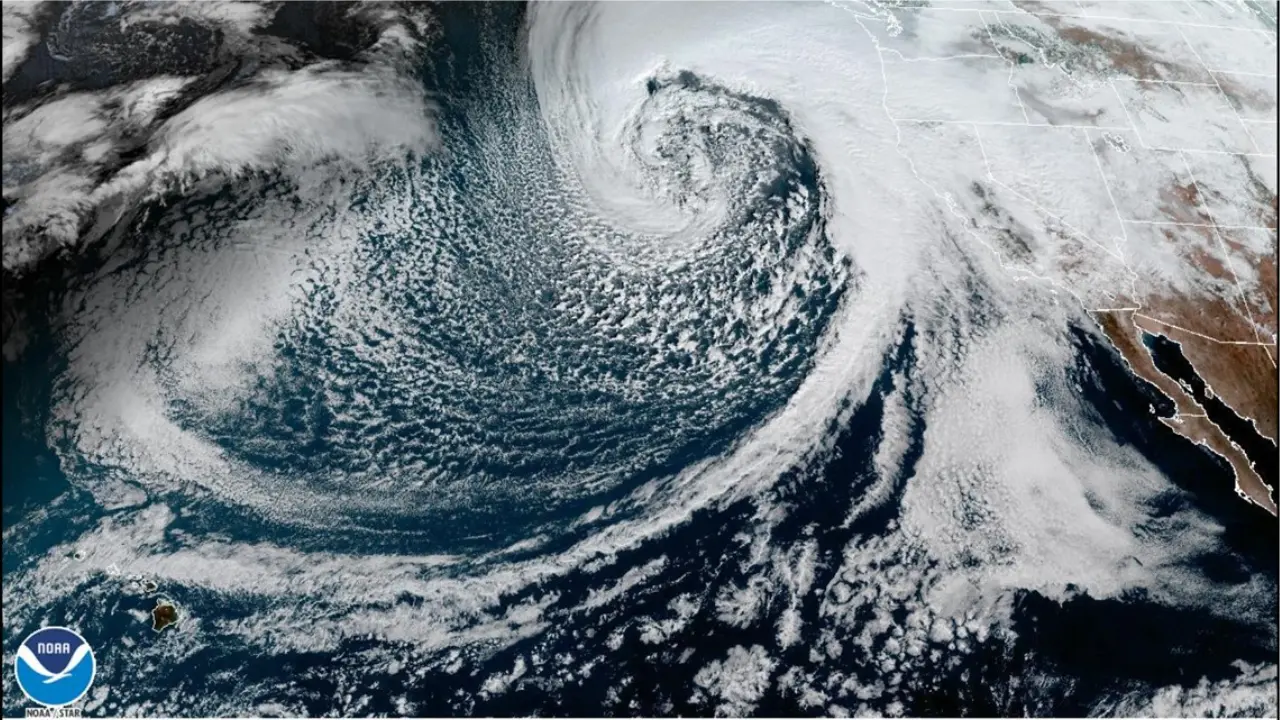In recent years, extreme weather events have become more frequent and severe, impacting regions across the globe. One such event, a bomb cyclone, recently hit California, causing significant disruptions and raising concerns about climate change. In this article, we will explore the impact of the bomb cyclone on California and the importance of preparedness for extreme weather events.
-
What is a Bomb Cyclone?
Definition and Formation
A bomb cyclone, also known as explosive cyclogenesis, is a weather phenomenon characterized by a rapid drop in atmospheric pressure within 24 hours. This results in intensifying winds and severe weather conditions. Bomb cyclones typically occur when a cold air mass collides with a warm air mass, forming a powerful storm system.
Impact and Severity
Bomb cyclones can bring a range of severe weather conditions, including heavy rain, strong winds, and even blizzards in certain regions. These storms can lead to flooding, landslides, power outages, and transportation disruptions. The intensity and impact of a bomb cyclone can vary depending on the specific location and other atmospheric factors.
-
Bomb Cyclone in California
Unusual Occurrence
California is not typically known for experiencing bomb cyclones, making their occurrence in the region particularly noteworthy. The recent bomb cyclone that hit California brought heavy rains, strong winds, and significant temperature changes, affecting various parts of the state.
Impact on California
The bomb cyclone in California resulted in several consequences. Heavy rains caused flash flooding in some areas, leading to property damage and road closures. Strong winds knocked down trees and power lines, causing power outages and disruptions to daily life. These factors created challenges for residents and highlighted the need for preparedness in the face of such extreme weather events.
-
Importance of Preparedness
Early Warning Systems
Having effective early warning systems in place is crucial when it comes to preparing for extreme weather events like bomb cyclones. Timely and accurate weather forecasts allow residents and authorities to take necessary precautions, such as evacuations, securing property, and ensuring the safety of individuals in vulnerable areas.
Emergency Response and Infrastructure
Preparing for bomb cyclones and other severe weather events involves robust emergency response plans and well-maintained infrastructure. Adequate resources should be allocated to address potential damages, restore essential services, and immediately assist affected communities. Additionally, ensuring the resilience of critical infrastructure, such as power grids and transportation networks, is vital to minimizing the impact of such events.
-
Climate Change and Adaptation
Climate Change Connection
The occurrence of bomb cyclones in unusual regions like California raises concerns about the influence of climate change. Climate change can contribute to the intensification and frequency of extreme weather events, including bomb cyclones. The warming of the oceans and changes in atmospheric conditions play a role in the formation and severity of these storms.
Adaptation and Mitigation
Addressing the challenges posed by climate change requires both adaptation and mitigation strategies. Adaptation involves building resilience, improving infrastructure, and implementing policies that promote preparedness and response to extreme weather events. Mitigation efforts, such as reducing greenhouse gas emissions and transitioning to cleaner energy sources, aim to mitigate the long-term impacts of climate change.
Conclusion
The bomb cyclone that recently hit California serves as a reminder of the increasing frequency and severity of extreme weather events worldwide. Understanding the nature of these events, their impact, and the importance of preparedness is crucial for individuals, communities, and policymakers. By investing in early warning systems, emergency response plans, and climate change adaptation measures, we can better navigate the challenges presented by bomb cyclones and other extreme weather events, ensuring the safety and well-being of affected regions.



